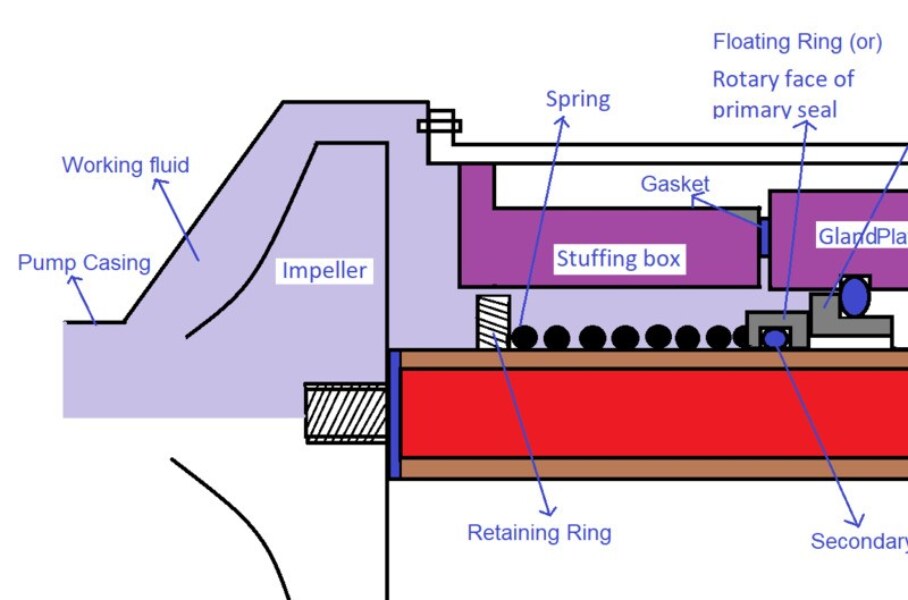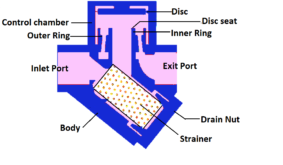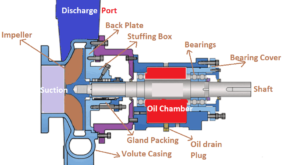Table of Contents
Types of Mechanical Seals
There are so many classifications of mechanical seals. The following figure represents the vital classification of mechanical seals that are widely used in industries.

A. Types of Mechanical Seals Based on O-ring
As shown in Figure 1, based on the O-ring, the mechanical seal is classified into the following types.
- Pusher Type Mechanical Seal
- Non-Pusher Type Mechanical Seal

1. Pusher Type Mechanical Seal
Pusher-type mechanical seal utilizes a dynamic O-ring, i.e., movable O-ring, to arrest the working fluid leak through the outer diameter of the shaft or shaft sleeve to the atmosphere, as shown in Figure 3. The figure-3 represents the fluid leakage path if the dynamic O-ring fails.

The floating ring axially pushes the O-ring towards the stationary ring due to thermal expansion or gradual wear of the seal face. Hence the name pusher type mechanical seal. To achieve smooth sliding movement of the O-ring on the shaft or the sleeve, the surface of the shaft or the sleeve must be very smooth.
Drawbacks of Pusher Type Mechanical Seal
Solids in the slurry-type fluid can often build upon the O-rings and prevent the axial movement of the floating ring (i.e., hang-up condition), resulting in the gap between the floating ring and the stationary ring.
2. Non-Pusher Type Mechanical Seal
Non-pusher type mechanical seal uses a static O-Ring that never moves axially because the O-Ring is located before the bellow as shown in figure-4. Hence the name non-pusher type mechanical seal. Unlike pusher-type seals, non-pusher-type seals employ a bellow which incorporates significant radial clearance between its convolutions and the outer diameter of the shaft, thus effectively preventing issues caused by the accumulation of solid particles, commonly known as the hang-up problem.

A Glimpse of Pusher Vs Non-Pusher Type Mechanical Seal
| Pusher Seal | Non-Pusher Seal |
|---|---|
| Seal face closing force provided by spring | Static O-rings are used |
| Dynamic O-rings are used | Seal face closing force is provided by the bellow |
| Likely to hang up | Seal face closing force is provided by the bellow |
| It cannot be used in applications where working fluid has crystallization property | Can be used |
B. Types of Mechanical Seals Based on Force Balance
A mechanical seal is classified into two types based on the force balance between the seal opening and seal closing force. They are
- Unbalanced Mechanical Seal
- Balanced Mechanical Seal
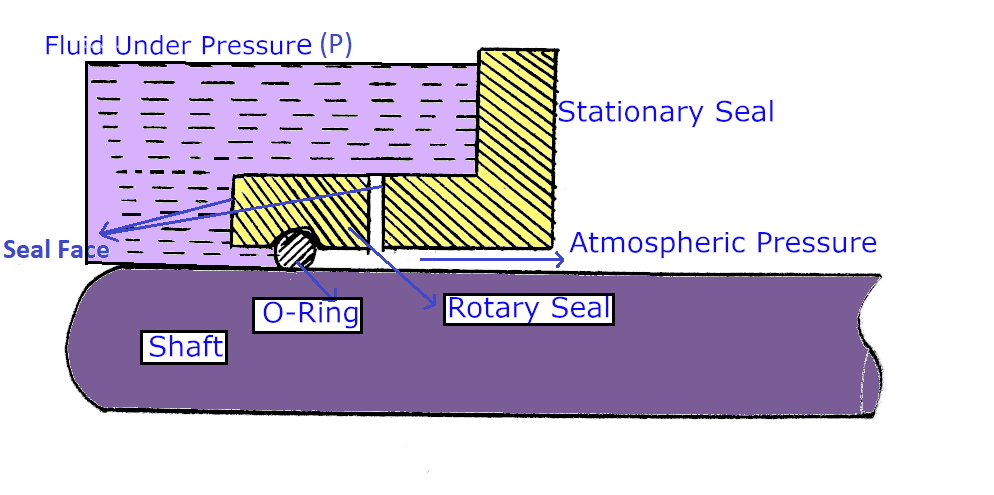
Seal balance, in a sense, balances the different axial forces acting on the seal faces. The seal face is shown in Figure 5. As shown in Figure 6, the working fluid imparts equal pressure on the floating ring (rotary seal ring) & stationary ring as well as in the seal contact zone. Since the fluid pressure is identical, the load across the seal face depends on the area normal to the fluid pressure.
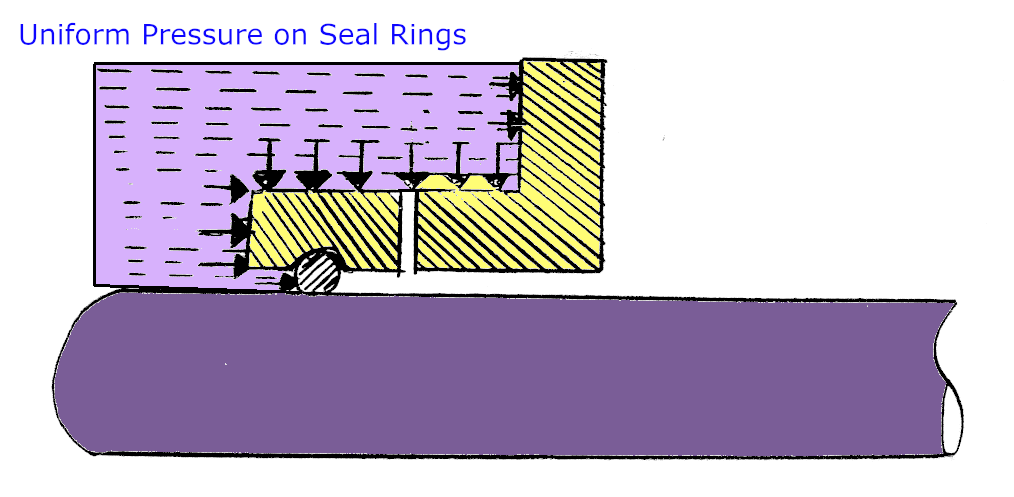
Note:
The gap between the seal faces is shown in an exaggerated view for understanding purposes. In reality, the gap between two mating seal faces is filled with the seal cooling fluid of film thickness less than 1 micrometre.
The following figure represents the different forces acting on the seal rings for effective sealing.

Where
 represents the seal opening force
represents the seal opening force represents the hydrostatic force
represents the hydrostatic force represents the spring force
represents the spring force- P represents the fluid pressure
Fluid pressure distribution at the seal contact face
The upper side of the seal contact face experiences hydrostatic pressure of fluid surrounding the seal (![]() ), and the lower side experiences atmospheric pressure, i.e., as shown in figure-7. The pressure distribution across the seal contact face is linear, as shown in Figure 8.
), and the lower side experiences atmospheric pressure, i.e., as shown in figure-7. The pressure distribution across the seal contact face is linear, as shown in Figure 8.
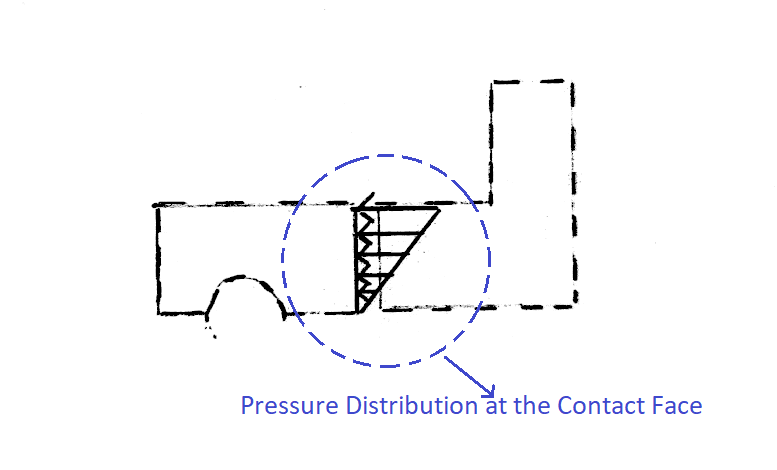
Since it varies linearly, the pressure across the seal contact face is the mean value of both pressures.
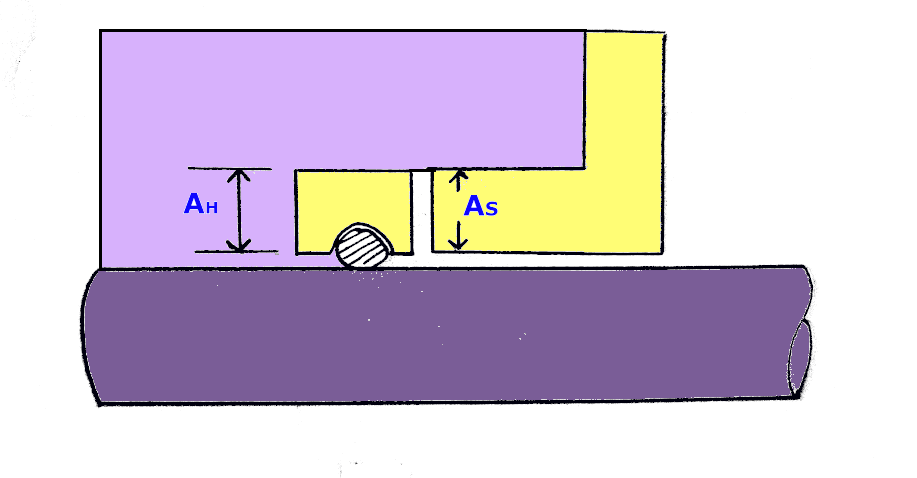
With respect to figure-9:
AH represents the hydraulically unbalanced area because the fluid pressure acts only at one side of the rotary seal, as shown in Figure 7.
AS represents the seal face contact area.
The product of pressure and the corresponding area normal to the pressure gives the respective force.
By balancing the force in the horizontal direction,
The seal closing force must be greater than the seal opening force to prevent fluid leakage through the primary seal. In general, the spring force is negligible compared to the force due to fluid pressure; hence, it can be neglected.
1. Unbalanced Mechanical Seal
Case-1:
Let us consider an example. Fluid is under the pressure (P) of ![]() and hydraulically unbalanced area & seal contact area is same i.e.,
and hydraulically unbalanced area & seal contact area is same i.e., ![]() as shown in the figure-10.
as shown in the figure-10.
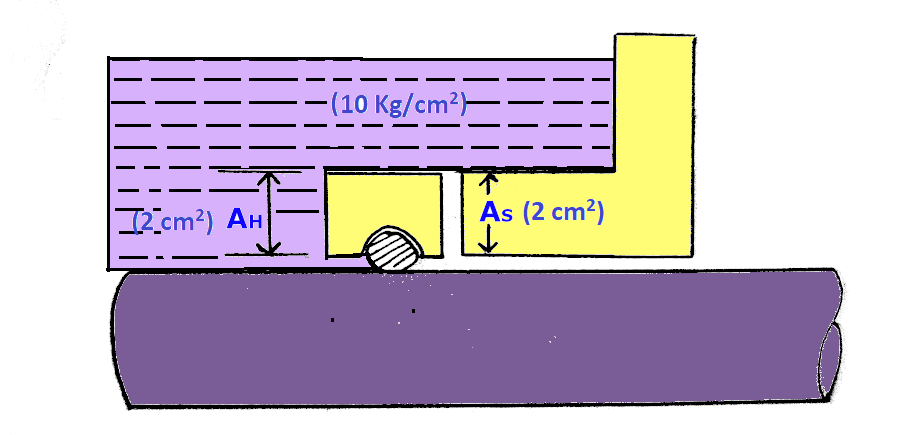
Since pressure varies linearly at the seal contact zone,
Average pressure ![]()
Seal Opening Force: –
![]()
Seal Closing Force: –
![]()
Closing force ![]() opening force, thus it is an unbalanced seal. The degree of unbalance is quantified by a ratio called load factor (K).
opening force, thus it is an unbalanced seal. The degree of unbalance is quantified by a ratio called load factor (K).
![]()
In this case, ![]()
Case-2:
Consider the following example, the fluid pressure (P) be ![]() , hydraulically unbalanced area
, hydraulically unbalanced area ![]() as same as the above example. But now consider seal face contact area
as same as the above example. But now consider seal face contact area ![]() as shown in the following figure.
as shown in the following figure.

Seal Opening Force: –
![]()
Seal Closing Force: –
![]()
Closing force ![]() opening force, thus it is an unbalanced seal.
opening force, thus it is an unbalanced seal.
![]()
In this case, ![]()
2. Balanced Mechanical Seal
Consider the following example, the fluid pressure (P) to be ![]() , hydraulically unbalanced area
, hydraulically unbalanced area ![]() and seal face contact area
and seal face contact area ![]() as shown in the following figure.
as shown in the following figure.
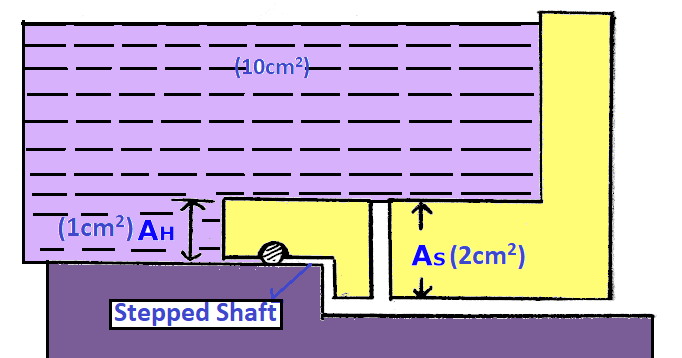
Seal Opening Force: –
![]()
Seal Closing Force: –
![]()
Closing force ![]() opening force, thus it is a balanced seal.
opening force, thus it is a balanced seal.
![]()
In this case, ![]()
A Glimpse on Balanced Vs Unbalanced Mechanical Seal
| Balanced Mechanical Seal | Unbalanced Mechanical Seal |
|---|---|
| The shaft consists of steps to reduce the hydraulic area so that the hydraulic load matches to seal opening force. | It is used in relatively lower pressures, i.e., 10 to 15 bars and rubbing velocities of 15m/s. |
| The shaft consists of steps to reduce the hydraulic area so that hydraulic load matches to seal opening force. | The shaft is plain (i.e., non-stepped shaft) |
| In practice, the K value ranges from 0.6 to 0.9 due to the risk of seal face opening. | In practice, the K value ranges from 1.1 to 1.2. |
C. Types of Mechanical Seals Based on Seal Position
A mechanical seal is classified into the following two types based on seal position.
- Internal Mechanical Seal
- External Mechanical Seal
1. Internal Mechanical Seal
The seal is mounted inside a pump’s seal chamber, where it is completely exposed to the process fluid, as shown in Figure 13.

The process fluid is on the outer diameter of the seal.
Advantages of Internal Mechanical Seal
- Since the seal is mounted inside the seal chamber, the increase in fluid pressure assists in the closing of seal rings instead of opening. Thus, this type of seal is preferred in high-pressure applications.
- The essential advantage is that the centrifugal force of the seal face opposes the leak through the contact face of the seal and keeps away any debris from the mating faces.
- Easy to cool the seal since the process fluid surrounds the contact face of the seal.
Disadvantages of Internal Mechanical Seal
- External seal cooling, i.e., API flushing Plan 32, is preferred when pumping liquid containing abrasive solid particles. But in this case, the seal cooling liquid dilutes the process liquid since it is a flushing plan.
- Seal material must be compatible with the process fluid to avoid wear due to corrosion …etc.
2. External Mechanical Seal
An external mechanical seal is preferred when there is no sufficient axial or radial space in the seal chamber. The seal is mounted outside the process fluid, i.e., outside the seal chamber, as shown in Figure 14.
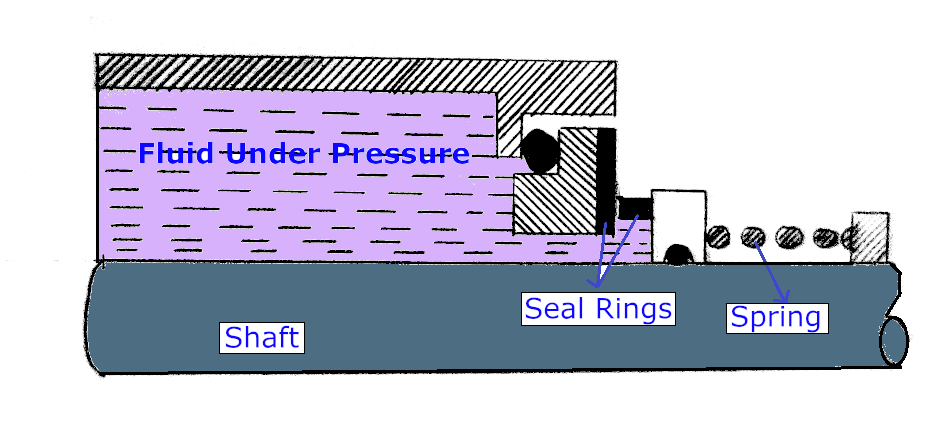
The fluid leak is from the inner diameter to the outer diameter of the seal.
Advantages of External Mechanical Seal
- External mechanical seal eases minor adjustments in the axial position of the seal without dismantling the pump. Monitoring the seal wear is easy.
- Materials that may not be suitable for process fluid can also be used since there is no contact between them.
Disadvantages of External Mechanical Seal
- An external mechanical seal is not preferred to seal high pressures since the fluid pressure assists in seal face opening.
- The centrifugal force of seal rings assists in seal leakage.
